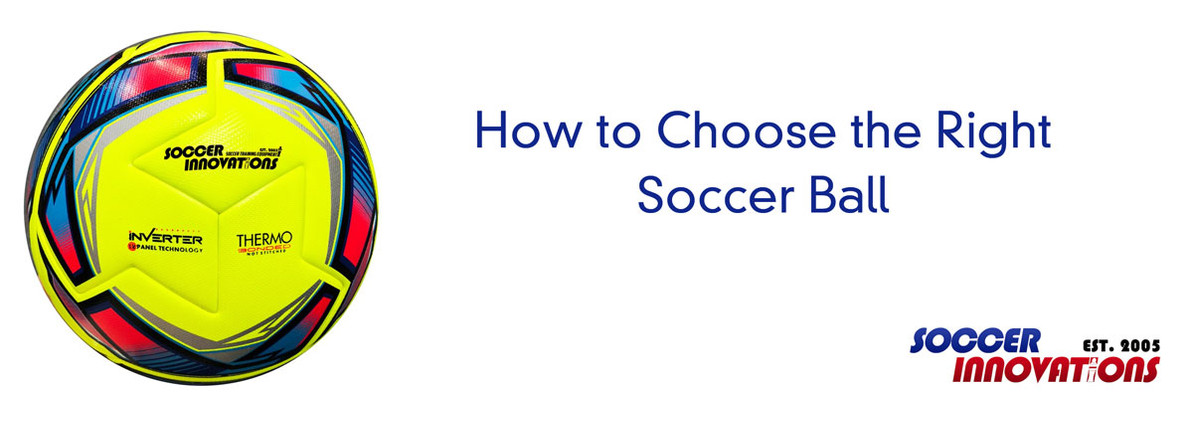How to Select the Right Soccer Ball for You, Your Child & Your Team
When it comes to choosing a soccer ball for yourself, your child or your team, there are many options available. But how do you know which soccer ball is the best ball for you? Read on to discover the 3 main soccer ball types and the pros and cons for each.
There are 3 different types of soccer balls, each having their own type of stitching:
- Machine Stitched
- Hand Stitched
- Seamless Molded Panel
Machine Stitched Soccer Balls
You’ll be able to identify a
machine stitched soccer ball by the tiny micro-stitches that hold each panel of the soccer ball tight against its neighboring panel. The big box stores and major sports equipment brick and mortar stores typically carry machine stitched balls because they are made in China and the price point is lower.
Machine stitched soccer balls are great for younger players under the age of 12 because they are lighter in weight, easier to head and are softer when they hit you. They are also more inexpensive, making this a great choice for your school aged soccer star.
Hand Stitched Soccer Balls
For teenagers and older soccer players, the machine stitched ball is too light. Players can lose control of the ball making it not perform as well in games and practice.
For this reason, the hand stitched balls are better for them. These soccer balls were originally made in Pakistan and have a much thicker thread holding the panels together. They are typically a little bit more expensive because they are stitched by humans, not machines.
Hand-stitched soccer balls are slightly heavier because the thicker stitch can hold thicker material, so soccer players can control the ball better.
Seamless Panel Soccer Ball
The third type of soccer ball that has become popular in recent years is a thermal molded seamless soccer ball. Molded soccer balls are used in the Champions League, World Cup and other professional soccer leagues worldwide. They’ve become a preferred ball because with no seam, there is no water penetration or air loss.
It retains its shape well, often better than the other ball types (although today’s technology provides for only a rare occurrence of a lopsided ball, regardless of the type of ball).
Another advantage of a seamless ball is you can add more or less air to the ball depending on who is using the ball. You can put a bit more air in it so it plays a bit heavier so the older players appreciate it. Take a bit of air out of the ball and it becomes a bit lighter so the younger players can utilize it.
Soccer Ball Material
Generally speaking, the cheaper the ball, the less expensive the material that is used to create the ball. Meaning it won’t play quite as well as the higher dollar materials that are softer and handle weather changes better.
We’re Here to Help
Soccer Innovations carries several seamless balls at different price points for various age levels. If you aren’t sure which ball type is best suited for yourself, your child or your team, give us a call at 877-757-9255 and one of our passionate soccer enthusiasts will help you choose the right ball for your specific situation.
Recent Posts
-
The Gift of Balance : Mastering Your Game with Balance Board Brilliance
When we think about soccer training, our minds often wander to the pitch, the ball, and all the ri …Nov 8th 2023 -
Mastering the Game: The Transformative Power of Speed and Agility Poles in Soccer
The beautiful game, demands not just skill with the ball but also agility, speed, and precise moveme …Nov 6th 2023 -
The Role of Soccer Training Mannequins
Soccer, often hailed as the world's most beloved sport, demands precision, agility, and teamwork. Be …Oct 24th 2023




